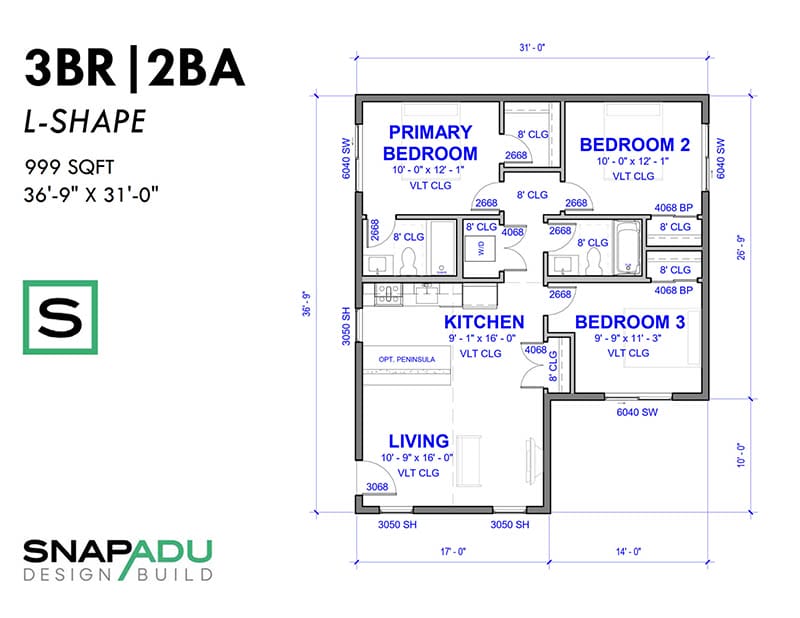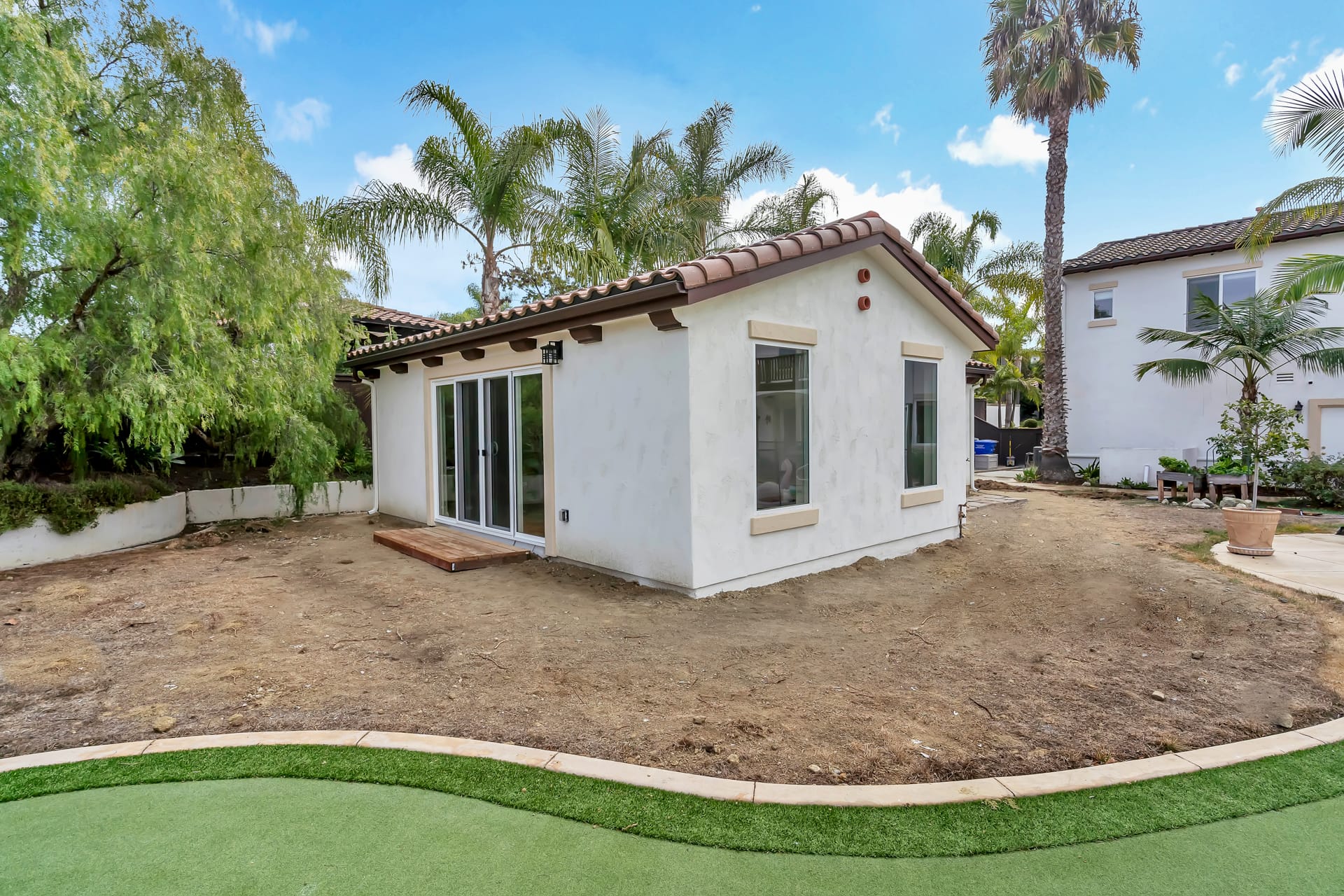When considering the construction of an accessory dwelling unit (ADU), it is crucial to take into account stormwater runoff management and erosion control. Failure to address these concerns can result in significant problems, including flooding, soil erosion, and water pollution. Some cities in Greater San Diego require specific stormwater management plans in conjunction with obtaining a permit to build an ADU. Read on for more information on what this entails.
What is stormwater management?
Stormwater runoff is rainwater that falls on the roof, driveway, and other impervious surfaces (a.k.a. “improvements”) and flows over the land, potentially causing erosion, flooding, and pollution. Many cities require owners to manage stormwater runoff by constructing a stormwater collection system also known as a “bio-retention basin.” These basins are often a special pool or ditch, designed by a civil engineer, and constructed with specific materials to allow for water to collect and slowly seep into the soil. The size of these basins is calculated based on the impervious area which is created by the improvements.
Is stormwater management required for ADUs?
Stormwater management and erosion control is often not often a factor in ADU construction given the small footprint of an ADU (<1,200 square feet). However, impervious improvements can add up when driveways, hardscape and pools are also constructed. It is important to stay under the 10,000 square foot mark, as exceeding that threshold pushes the project into another tier, where it is deemed a “Priority Development Project.” Priority Development Projects result in increased paperwork, fees and construction costs.
What does stormwater management typically look like on ADUs?
When an ADU is nearing completion, gutters will be installed to concentrate rainwater. The site will also be graded to promote the flow of water towards a basin. Typically, the basin will be anywhere from 30 sqft to 75+ sqft depending on the size of the unit. For location, the gutters need to be able to run from the house to the stormwater management basin.
It is important to maintain the site and basin each year to ensure runoff will drain towards the basin and that the basin remains in operable condition to allow the water to seep into the soil.
How much does stormwater management for ADUs cost?
A bio-swale, drainage basin, or other contouring work can be completed to manage on-site stormwater, and it typically comes with a cost of around $5-10K.
When it comes to cost-effectiveness, basins are a popular choice as they usually fall within the $5-10K price range, depending on their size and design. As building density increases, there is a growing concern over runoff and “cross lot drainage,” which can lead to legal issues. Investing in a well-constructed basin can serve as a preventative measure, saving you from costly consequences down the line. In other words, an “ounce of prevention is worth a pound of cure.”
What are the storm water and erosion management requirements in Greater San Diego?
In a few select jurisdictions, ADUs are subject to storm water management requirements.
Encinitas ADU regulations require site drainage and storm water mitigation for ADUs >500 sqft. They also require the owner to record a covenant on the property stating that the basin will not be de-constructed or removed, that it will remain in operable condition and that the city has the right to inspect the basin in the future to ensure compliance.
Vista ADU regulations require site drainage and storm water mitigation for ADUs.
Del Mar includes specific instructions on ADU Erosion Control & Stormwater Notes – ADU Erosion Control, stating that the “Site Plan shall indicate what type of erosion control devices will be utilized within the limit of disturbance.” A list of erosion control devices is available on the California Stormwater Quality Association website.
Reach out to experts for your unique situation
We are dedicated to providing you with valuable insights and expertise through our technical blogs. It’s important to note that regulations in the ADU are constantly evolving, and changes may occur even after the publication of this blog.
At SnapADU, we understand the significance of staying up-to-date with the latest regulations and industry trends. We work closely with our clients on every project, ensuring that we are aware of any changes that may affect their specific requirements. Our commitment to maintaining a deep understanding of the regulatory landscape allows us to deliver accurate guidance and customized solutions.
While our blogs offer a wealth of information, we encourage you to reach out to our team for personalized assistance and to discuss your unique circumstances. We are here to navigate the intricacies of the ever-changing regulations alongside you, ensuring compliance and providing optimal outcomes for your projects.






0 Comments